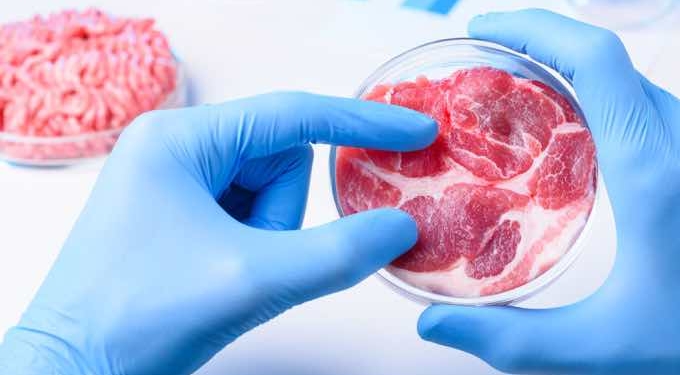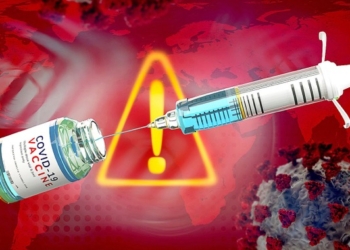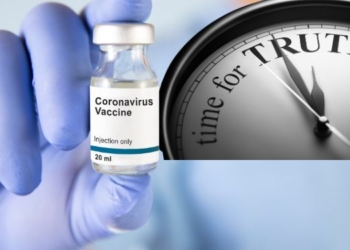
Source: Mercola.com
Story at-a-glance
- Industrial agriculture is one of the most unsustainable practices of modern civilization, but the answer is not to replace farms with chemistry labs. Grasslands are key to fixing many environmental problems, and herbivores are a necessary part of this ecosystem
- Meat substitutes often require water, chemicals and fossil fuel inputs, and in that respect, differ little from conventional agriculture. According to a 2015 study, lab-grown meat actually requires more energy than conventional agriculture
- The meat substitute created by Impossible Foods contains a mix of wheat, coconut oil, potatoes and “heme” derived from genetically engineered yeast
- In a new report, Friends of the Earth calls for more stringent safety assessments, regulations and labeling requirements for fake meat and other novel animal replacement products
- When FDA concluded Impossible Foods’ voluntary GRAS notification for GE yeast-derived “heme” was too inadequate to establish safety, the company withdrew its notification (which is legal) and marketed its meatless burger without the FDA’s sign-off
By Dr. Mercola
Industrial agriculture is one of the most unsustainable practices of modern civilization. The “bigger is better” food system has reached a point where its real costs have become readily apparent. Like water running down an open drain, the earth's natural resources are disappearing quickly, as industrialized farming drives air pollution, water pollution, deforestation, rising carbon emissions and the depletion, erosion and poisoning of soils.1
The long-term answer, however, lies in the transition to sustainable, regenerative, chemical-free farming practices, not in the creation of food manufacturing techniques that replace farms with chemistry labs, which is the “environmentally friendly” alternative envisioned by biotech startups and its chemists.
The conventional meat industry in particular has been shown to have a deleterious influence on our environment and climate, giving rise to a number of efforts to bring animal replacement products to market. Impossible Foods and its meatless, “bleeding” burger2,3,4,5 is one among several such inventions, and it's a perfect example of an answer that may well create more hazards than it solves.
Meatless ‘Bleeding' Burger — Epitome of Fake Food
Contrary to lab grown meat,6 the meat substitute created by Impossible Foods contains a mix of wheat, coconut oil, potatoes and “heme,” the latter of which is derived from genetically engineered (GE) yeast. Impossible Foods was founded in 2011 by Pat Brown, a Stanford University chemist.
A primary ingredient in the Impossible Burger is GE soy leghemoglobin, which releases a heme-like protein when broken down. This protein is what gives the plant-based patty its meatlike look, taste and texture, and makes the patty “bleed” when cooked.
While the company refers to it as “heme,” technically, plants produce non-heme iron.7 Heme iron only occurs in meat and seafood. A main difference between heme and non-heme iron has to do with their absorbability. Plant-based non-heme iron is less readily absorbed.
This is one of the reasons why vegans are at higher risk of iron deficiency anemia than meat eaters. Moreover, while soy leghemoglobin is found in the roots of soybean plants, the company is recreating it using GE yeast. As explained on the company website:8
“Heme is exceptionally abundant in animal muscle — and it's a basic building block of life in all organisms, including plants. We discovered how to take heme from plants and produce it using fermentation … We genetically engineer yeast to make a key ingredient: heme. The process allows us to produce the Impossible Burger at scale with the lowest achievable environmental impact.
We start with the gene for a protein called leghemoglobin, a heme protein that is naturally found in the root nodules of soy plants … We add the soy leghemoglobin gene to a yeast strain, and grow the yeast via fermentation. Then we isolate the leghemoglobin, or heme, from the yeast. We add heme to the Impossible Burger to give it the intense, meaty flavor, aroma and cooking properties of animal meat.”
Possible Risks of the Impossible Burger
While the meatless patties are now sold in nearly 2,000 restaurants across the U.S., questions remain about its long-term safety for human health. Friends of the Earth, an environmental activism group with an international following, has pointed out that we do not yet know enough about the health effects of eating this kind of fake meat, and that its speedy market release is foolhardy at best.
In its report “From Lab to Fork: Critical Questions on Laboratory-Created Animal Product Alternatives”9 released June 2018, Friends of the Earth calls for more stringent safety assessments, regulations and labeling requirements. Dana Perls, a Friends of the Earth food and agriculture campaigner, told Bloomberg,10 “We need real data. People have been clear that they want real, truly sustainable organic food, as opposed to venture capitalist hype which could lead us down the wrong path.”
The report highlights a number of health and safety concerns and environmental impacts hidden beneath “climate-friendly” claims. It also points out the lack of substantiation for “clean meat,” “animal-free,” “plant-based” and “sustainable” claims. As reported by Bloomberg:11
“Friends of the Earth has raised concerns about ‘heme,' the protein derived from genetically engineered yeast that Impossible Foods said gives the burger its faux meatiness. The U.S. Food and Drug Administration has asked for more “direct” evidence of safety as well as more testing on allergens, as reported by The New York Times12 last summer.
‘It needs to be done by a third party,' Perls said of testing heme, with research ‘on long-term health implications.' Impossible Foods said a panel of experts it hired has twice determined the substance to be safe, in 2014 and 2017.”
GRAS Designation Is Often Meaningless When It Comes to Novel Ingredients
To those familiar with how the system works, however, the hiring of “a panel of experts” to confirm safety brings little to no comfort. As explained in my 2015 article, “Flawed GRAS System Lets Novel Chemicals Into Food Supply Without FDA Safety Review,” a company can simply hire an industry insider to evaluate a brand-new ingredient, and if that individual determines that the ingredient in question meets federal safety standards, it can be deemed “generally recognized as safe” or GRAS, with no further independent third party evaluation being required.
That's what happened here.13 The fact that Impossible Foods hired and paid for the panel members to do the GRAS evaluation of Impossible Burger's key ingredient, soy leghemoglobin made from GE yeast, is reason enough to take the safety claim with a grain of salt. As noted by U.S. Right to Know (USRTK) reporter Stacy Malkan:14
“The three food researchers who wrote the expert panel report that Impossible Foods submitted to the FDA — Joseph Borzelleca, Michael Pariza and Steve Taylor — are on a short list of scientists the ‘food industry turns to over and over again' to obtain GRAS status …
[A]ll three served on the Phillip Morris Scientific Advisory Board, according to a 2015 investigation by the Center for Public Integrity [CPI], ‘The Misinformation Industry: Food safety scientists have ties to Big Tobacco'15 … ‘[C]ritics of the GRAS system say Borzelleca is emblematic of a system that is rife with conflicts of interest,' CPI reported.”
According to the FDA, the research included in the company's GRAS notification (which is voluntary) was inadequate and could not, in fact, establish safety. Importantly, the company's assessment of allergenicity was lacking. However, as permitted by GRAS rules, Impossible Foods simply withdrew its voluntary GRAS notification and began marketing its meatless burger without the FDA's official blessing.
How Environmentally Friendly Are Meat Substitutes?
According to Friends of the Earth, sustainability claims need to be backed up by a full environmental impact assessment, starting with the product's creation and ending with its disposal. Meat substitutes often require water, chemicals and fossil fuel inputs, and in that respect, differ little from conventional agriculture.
According to an Environmental Science and Technology study16 published in 2015, lab-grown meat where the meat is cultured from stem cells actually requires more energy than conventional agriculture. As explained in the study's abstract:
“Cultured, or in vitro, meat consists of edible biomass grown from animal stem cells in a factory, or carnery. In the coming decades, in vitro biomass cultivation could enable the production of meat without the need to raise livestock.
Using an anticipatory life cycle analysis framework, the study described herein examines the environmental implications of this emerging technology and compares the results with published impacts of beef, pork, poultry, and another speculative analysis of cultured biomass.
While uncertainty ranges are large, the findings suggest that in vitro biomass cultivation could require smaller quantities of agricultural inputs and land than livestock; however, those benefits could come at the expense of more intensive energy use as biological functions such as digestion and nutrient circulation are replaced by industrial equivalents.
From this perspective, large-scale cultivation of in vitro meat and other bioengineered products could represent a new phase of industrialization with inherently complex and challenging trade-offs.”
As noted by Perls, “We've had the experience of watching the environmental impacts of some food products, and we really can't afford to create more unsustainable food systems that take us in another wrong direction” — which is precisely what the fake meat industry is doing, and in more ways than one. Aside from the fact that it doesn't appear to have any regenerative capabilities that would benefit the ecosystem, there's also the issue of health effects.
Ultra-Processed Foods Linked to Increased Cancer Risk
A number of studies have highlighted the risks of ultra-processed foods, showing they raise your risk of cancer, and the more ultra-processed foods you eat, the greater your risk.17,18,19,20 In one, which included nearly 105,000 participants followed for an average of five years, an average of 18 percent of their diet was ultra-processed, and each 10 percent increase in ultra-processed food raised the cancer rate by 12 percent, which worked out to nine additional cancer cases per 10,000 people per year.
The risk of breast cancer specifically went up by 11 percent for every 10 percent increase in ultra-processed food. While sugar and unhealthy fats are key staple ingredients suspected of causing these effects, there's reason to believe fake meat might have a similar impact, for the simple fact that the human body is not designed to process fake meat. Never in the history of mankind has GE yeast been a major part of our diet.
Research21 has also linked poor diet to an increased risk of cardiometabolic mortality (death resulting from Type 2 diabetes, heart disease and stroke). According to the authors, suboptimal intake of key foods such as fruits, vegetables, nuts and animal-based omega-3, along with excessive consumption of processed foods such as processed meats and sweetened beverages accounted for more than 45 percent of all cardiometabolic deaths in 2012.
If processed meat (as opposed to unprocessed meat like steak) is a well-established contributor to cancer and ill health, what assurances do we have that lab-created GE yeast-derived meat substitutes are going to be any safer, let alone an actual boon to our health?
Angered by the apparent distrust expressed by folks concerned about the introduction of fake meats, Impossible Foods chief communications officer Rachel Konrad accused critics of being “anti-science fundamentalists” spouting “preposterous propaganda,”22and that Friends of the Earth has a “total disregard for science, facts and reality.”23
Defender of Toxins Runs Propaganda Machine for Fake Meats
https://www.youtube.com/watch?v=EtzyA_tbuI0
According to the American Council on Science and Health (ACSH), Bloomberg is an example of “corporate science media” that should not be trusted.24 The irony of the situation is extreme, to say the least, considering the ACSH is a toxic industry front group serving masters such as the tobacco and pesticide industries.
ACSH is the “science experts” the fake meat industry is now relying on to spread the gospel of cruelty-free, environmentally sound meatless meat, which alone should set off warning bells among those familiar with tobacco and chemical industry PR tactics.
Inexplicably, ACSH is still being treated as a reputable information source by mainstream media, despite the fact that health, environmental, labor and public-interest groups have urged media outlets to stop publishing ACSH content25 — or at least require that it be identified for what it truly is: a corporate front group.
In an EcoWatch commentary, Malkan points out how Impossible Foods is trying to manipulate the public discussion by redirecting you to its own carefully vetted sources, all of whom are well-recognized spin-masters for toxic industries:26
“Instead of enduring the bias of Bloomberg, Konrad tells us, we should take heart in the rise of Mark Lynas, a promoter of GMOs and pesticides who communicates inaccurate information about science, according to scientists and food experts.
Konrad's article also links to a column by Ted Nordhaus, who sits on the board of the parent organization of Genetic Literacy Project, a chemical industry propaganda group that attacks cancer scientists as part of its role as an ‘industry partner' in Monsanto's public relations strategy to protect Roundup weed killer from cancer concerns.
The false and inflammatory messaging these front groups use to promote genetically engineered foods, defend pesticides, ignore health and environmental risks and silence consumer and environmental advocates goes a long way toward explaining why the GMO industry isn't winning consumer trust …
Impossible Foods had the opportunity to write a new story, and build trust with an open, transparent process that respects consumer concerns. They blew it. Impossible Burger's new genetically engineered protein is new to the human food supply, and we are supposed to trust the manufacturer to vouch for its safety. But the company's process hasn't inspired trust.”
Industrial Agriculture Needs Major Overhaul, but Eliminating Nature Is Not the Answer
Creating patented lab-grown meat products is not about feeding the world or eliminating animal suffering. It's about dominating billionaires looking to put patents on the food system. While many view lab-created meat substitutes as the lesser of two evils when comparing it to conventional factory farmed meat that currently dominates the market, taking nature out of the equation altogether is not the answer, especially since holistic herd management is an integral part of the regenerative agriculture equation.
When animals are raised according to regenerative agriculture, a complete ecosystem is created, one that is both healing for the land and productive for the farmers who keep it. Eating meat is not synonymous with harming the environment; it's industrial farming practices that inflict the damage. Some also believe eating meat means ripping out more forests so animals can graze, but I'm certainly not advocating for that.
U.S. cropland is currently dominated by a two-crop planting cycle of corn and soybeans, largely for animal feed. Like concentrated animal feeding operations, these monocrops are devastating the environment, and even though they're plant foods, are part of the problem, not the solution.
Getting rid of these large swaths of corn and soy fields, which, if you've ever visited one, you'll know are chemical-laden and largely devoid of life, is key, as is reverting them back to what they were before, namely grasslands for grazing animals.
Grasslands are key to fixing many environmental problems, and herbivores are a necessary part of this ecosystem. By mimicking the natural behavior of migratory herds of wild grazing animals — meaning allowing livestock to graze freely, and moving the herd around in specific patterns — farmers can support nature's efforts to regenerate and thrive.
This kind of land management system promotes the reduction of atmospheric carbon dioxide (CO2) by sequestering it back into the soil where it can do a lot of good. Once in the earth, the CO2 can be safely stored for hundreds of years and adds to the soil's fertility.
Lab-made meat substitutes do not contribute to the regeneration of our environment. In fact, by being more energy intensive, fake meats continue pushing environmental problems to the brink. If your main concerns are animal welfare and environmental sustainability, your best bet is to support and buy meats that are certified grass fed organic, raised and slaughtered under humane conditions.
The most dependable source is meat certified by the American Grassfed Association (AGA), which ensures animals were born and raised on American family farms, fed only grass and forage from weaning until harvest, have not been treated with hormones or antibiotics, and raised on pasture without confinement to feedlots. In the Midwest, the Kalona SuperNatural brand was the first dairy brand to become AGA-certified.

















no vegans aren’t at higher risk of iron deficiency, only junk food vegans are. why must you preach this statement. tofu, beans, grains, spinach and seeds are all great sources of iron and a wholefoods plant based diet that incorporates these will give you excellent iron levels.